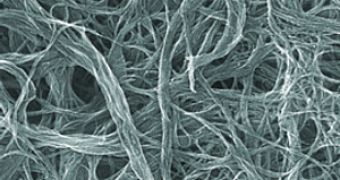The car batteries that we rely on today may be soon "driven" to extinction by recent discoveries. Engineers' old engine power-delivery problem has now been solved by means of the new supercapacitor.
Post-doctoral researcher Jiyoung Oh together with research scientist Mikhail Kozlov from the NanoTech Institute at the University of Texas in Dallas were proud to see a microscope picture of the material they had discovered during their research on the cover of the Synthetic Metals journal, as well as their paper on the subject published in the same magazine.
Supercapacitors are enhanced chargeable electronic components that are able to hold energy for extended periods of time. Their power is then redelivered in a steady, smooth stream, which is safe for operations involving sensitive electronics. The supercapacitors don't rely on chemical reactions in order to provide power, like the heavy lead batteries of cars, but instead they steadily accumulate electric charge. They fulfill many of the technology engineers’ wishes, through their reliability, efficiency, lightweight and safety.
Oh and Kozlov, together with nanotechnology prodigy child Dr. Ray Baughman, have given supercapacitors another essential attribute: flexibility. Their models were built from paper-thin single-walled carbon nanotubes encased in polypyrrole (a special type of polymer). This allows for the supercapacitor to be placed anywhere in the device it powers up and to fit any shape or size, which would be a tremendous aid, say, for hybrid car designs that now use pretty large arrays of metal batteries. Their research was partly funded by the International Research Internship Program of the Korea Research Foundation, a Robert A. Welch Foundation grant, a Korea Research Foundation Grant, and the LINTEC Corporation.
"Our electrode preparation procedure is an extension of conventional bucky-paper [a film made of 100 percent carbon nanotubes] fabrication technique for the multi-component system," said Dr. Oh. "This procedure is easily scalable for device fabrication on an industrial scale."

 14 DAY TRIAL //
14 DAY TRIAL //